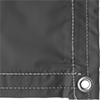Filter by
System of Measurement
Thickness
Width
Material
Length
Hardness Rating
Backing Type
Maximum Temperature
Hardness
Performance
Certificate Type
Specifications Met
Flexibility
Minimum Temperature
Raw Materials
Fastening and Joining
Facility and Grounds Maintenance
Material Handling
Building and Machinery Hardware
Heating, Ventilation, and Air Conditioning












































